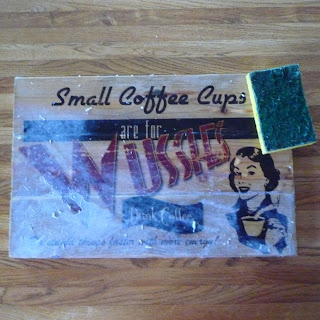Well, I'm still coming down off of the fun of celebrating my friend Anna's baby shower. So excited for her and her husband! What a lovely day! There's something about baby girls and PINK that are so fun to work with. This shower was pink with a capital P. The gift I gave Anna included a pair of baby shoes that I learned to make this past spring, thanks to my friend Lauren and her turning me on to the website Joyfolie. The woman at that website makes AMAZING baby shoes (and adult women's too) and sells a PDF pattern on her Etsy store for a simple baby shoe you can make at home. Here are the steps I used since I modified the pattern a little. First, cut out four pieces of each pattern piece, one out of the outer fabric and one out of the lining. Make sure to fold the fabric so either the right sides are together or the wrong sides are together before you cut so that the pieces will be mirror images of each other. If you don't make the pieces mirror images, you'll have shoes for two left feet (or two right feet!)
Take the lining piece for one of the shoe uppers and stitch along the back of the heel, right sides together. Iron seam flat. Repeat for the other lining upper piece.
Pin the upper to the sole, right sides together. The first shoe I sewed, I thought more pins = better. It actually worked better on the second shoe with only a few pins around the edge. Stitch.
Next, clip close to the stitching (but not THROUGH it) around the curved parts of the toe and heel and press the hem under, towards the bottom of the shoe. Using a very thin layer of fabric glue, glue both layers of the hem down to the sole of the shoe.
Flipped over, it should look like this:
Repeat all of the above steps for the outer shoe fabric.
Now, with both the outer and the lining pieces turned inside out, apply a very thin layer of fabric glue to the whole sole of one piece and carefully line up the edges and adhere the other piece so they are glued sole-to-sole. Try to pinch and glue all the way to the edge. I prefer Beacon Fabri-Tac because it's thick and won't run or bleed through, adheres almost immediately, and dries fast.
Once the glue is dry enough to work with, turn the outside fabric right side out and work the lining in to place. Add a very thin layer of fabric glue between the lining and outer fabric on the sides and top of the shoe to hold the lining in place. If your lining fabric sticks up past the outside fabric in any spots, trim it so the raw edges are even.
You can use store bought bias tape, or make your own out of matching or contrasting fabric. The bias tape will be used to finish off the raw edge. To make your own, cut a 1" piece of fabric at a 45 degree angle to the grain of the fabric. Iron in half and then fold the raw edges in to the center so it's fold in quarters and steam press. You will really only need a small length of bias tape. Sorry I didn't measure the exact amount! This is how the fold should look from the end:
Use your trusty fabric glue again and, starting at the back of the heel and a little bit past the center line, glue the bias tape around the opening of the shoe. Try to get the glue as close to the edge of the bias tape as possible, but not too much so that it squishes out. Try to get the raw edge of the shoe opening to nestle into the fold in the center of the bias tape. Go around the entire shoe opening and back to the center of the back heel, overlapping slightly the end where you started. Make sure the exposed end is glued well so it doesn't fray.
To embellish I used two TEENY TINY flowers made using the technique I taught the February "Fabric Flower Clips" tutorial. Here are the finished shoes:
The baby gift was made complete by sewing a very quick and easy dress-made-from-a-onsie I found on this blog through Pinterest.
Since the onsies come in a three-pack, I jazzed up the two remaining ones with one simple fabric flower.
Pretty cute, pretty girly, pretty fun to make!

























